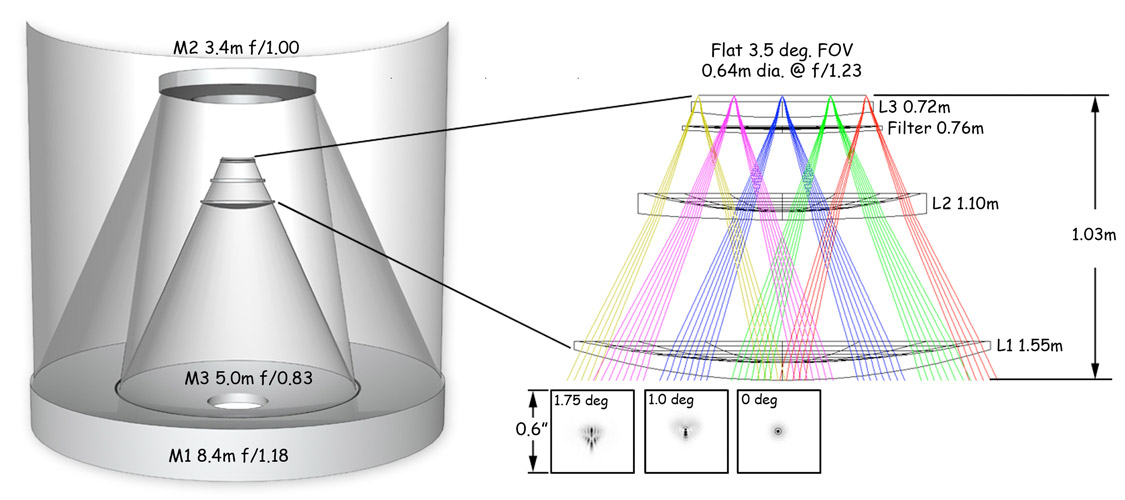The image below, which comes from a pilot project called the Deep Lens Survey (DLS), gives a taste of what the sky will look like with LSST. This image covers the area of the full moon, or half a degree. The DLS images are deep, showing roughly ten times as many galaxies per unit area than the Sloan Digital Sky Survey (SDSS), but the LSST data will actually go deeper still. LSST will also have better resolution than the SDSS as it has been designed from the ground up to minimize blurring, unlike many of today's telescopes.




